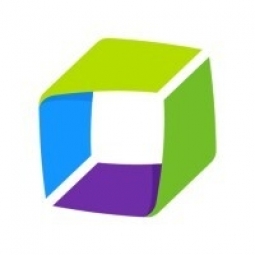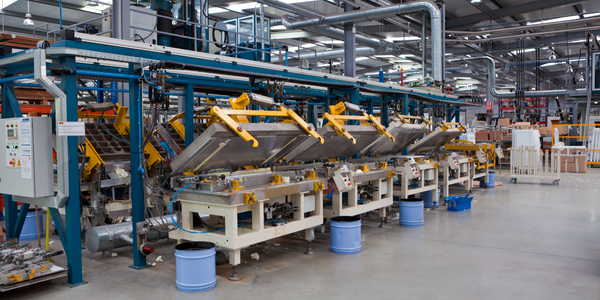Applicable Functions
- Maintenance
- Product Research & Development
Use Cases
- Leasing Finance Automation
- Time Sensitive Networking
About The Customer
Vivint is a leading smart home and automation company with 1.9 million customers and 11,000 employees. It is a subsidiary of NRG Energy, Inc. The company prides itself on putting customer experience at the heart of its drive to help families live safer, better lives through automation. Vivint's technology is tightly integrated into the lives of millions of people, helping them protect their homes and families. The company is committed to maintaining a competitive edge by bringing new features to market faster, without compromising the customer experience.
The Challenge
Vivint, a leading smart home and automation company, was facing challenges in maintaining flawless technology and software systems for its 1.9 million customers. The company's technology is deeply integrated into the lives of its customers, providing safety and automation services. Any system outage could potentially risk the safety of its customers, tarnish the brand reputation, and result in customer loss. In a rapidly changing technological world, Vivint needed to accelerate its innovation to maintain its competitive edge and bring new features to the market faster without compromising the customer experience. However, the company's existing monitoring solution was unable to provide the depth of visibility required to understand the root cause of problems impacting the customer experience in a timely manner. Vivint needed to enhance observability across its technology and software ecosystem to understand how its customers were interacting with its products and where improvements were needed.
The Solution
Vivint identified the need for an automated, intelligent solution that could provide continuous insights, enabling faster innovation and proactive issue resolution. The company required a solution that could work across its hybrid environment, including cloud platforms and legacy data centers, and quickly pinpoint the root cause of issues for fast resolution. After a detailed review of the observability market, Vivint chose Dynatrace as the best fit for its needs. Dynatrace’s full stack observability and advanced automation enabled Vivint to innovate at the speed of the market with greater confidence. Teams could see the impact of any changes they made in real time, from the code level right through to the end user. If problems arose, they could act quickly to protect the customer experience. The precise answers from Dynatrace changed the way Vivint’s teams worked, shifting from firefighting issues to proactively optimizing software to bring better products to market.
Operational Impact
Quantitative Benefit

Case Study missing?
Start adding your own!
Register with your work email and create a new case study profile for your business.
Related Case Studies.

Case Study
Digital Transformation in Insurance: A Case Study of Menora Mivtachim
Menora Mivtachim, one of Israel's largest pension fund and insurance carriers, was facing a significant challenge due to demographic trends in Israel. The growing rate of retirement planning and services was putting unprecedented pressure on the already strained insurance sector. The pension claims process was bottlenecked with complexities, bureaucracy, and errors. Menora Mivtachim's existing pension process was heavily manual and spreadsheet-based, requiring a team of 10 full-time employees to manage. The process involved gathering applicant information, conducting personal surveys, compiling bank information, and finalizing agreements. To leverage the growing opportunity in the retirement sector and position themselves as innovative insurtech leaders, Menora Mivtachim needed to digitalize their process, streamline the claims experience, and reduce quote times through automated processes.

Case Study
Centralizing Data for Improved Efficiency: A Case Study on Malvern Panalytical
Malvern Panalytical, a UK-based hi-tech electronics company, was grappling with the challenge of decentralized data storage. The company had a vast amount of unstructured data scattered across various platforms, from hard drives to emails and floppy disks. This made the data searching process extremely cumbersome and inefficient. The company's rapid growth, from 200 to over 1,000 employees in a decade, and expansion across three continents further exacerbated the need for a more structured and centralized data system. As a company involved in electronics manufacturing and software development, it was crucial for Malvern Panalytical to find a platform that could structure all their data, track all modifications of documents in real time, and provide clear visibility of the internal information flow across all its facilities.

Case Study
Managed Hosting Platform
Formula 1® is a sport where every millisecond matters. With changing preferences and the growth of the digital medium, many fans choose to experience the sport through the F1.com website. The website needs to deliver a superior experience to tens of millions of fans across the world consistently. Hence, it is imperative to have a robust platform that can deliver the required performance and scale with growing trac and dynamic fan expectations. Some of the key challenges are: • Every race weekend, Formula1.com attracts up to 7 million fans. Managing this huge surge in website traffic, requires a scalable hosting platform that can simultaneously allow millions of fans to experience the excitement of the sport seamlessly. • Fans across the globe expect an engaging and immersive experience through enriched and enhanced race content across multiple devices. To meet this requirement Formula1.com needs to have a robust platform that is able to deliver real-time updates and information across screens, be it tablets, TVs or smartphones. • A global brand like Formula 1® needs to ensure it delivers a consistent user experience across all platforms across the globe. This consistent delivery of enriched content cannot be compromised through downtime or any other issue at any point. • In an age where threats to global websites are prevalent, Formula 1® needed a platform that was ready to meet any challenge to its website. They needed a solution that delivers consistency, scalability and yet at the same time is continuously monitored, secure and reliable.

Case Study
ANZ Bank's Digital Transformation with Nintex Advanced Workflow
ANZ Bank, one of the top 50 banks in the world and the fastest-growing bank in Indonesia, was facing a challenge with its rapidly increasing transaction volume. The bank's existing business processes and workflow were becoming overwhelmed. Like most banks in Indonesia, ANZ was manually handling document submission and verification. Customers filled out paper loan applications and supporting documents, then delivered them to bank branches by mail or courier. Branch officers traveled to the bank’s headquarters or used postal mail, email, and phone calls to submit loan documents for verification. Lost or inaccurate documents created more emails and phone calls. Additionally, ANZ had to adhere to strict verification and financial regulations, including the Foreign Accounts Compliance Act. This act requires that all banks outside the United States provide key information about U.S. clients, including citizenship validation, to the Internal Revenue Service–a complex yet crucial process.

Case Study
Automation in Mining: Unleashing Productivity and Efficiency with 5G
The mining industry, a significant contributor to global economic activity with revenues exceeding USD 500 billion, is facing a challenge of improving efficiency and profitability. The industry is gradually shifting its focus towards automation as the next area of opportunity. Boliden, one of the world's most successful mining companies, operates the Aitik mine, the largest open pit in Europe. The Aitik mine is expanding, and with the increase in production from 36 million metric tons of ore to 45 million metric tons, the amount of rock removed will also increase significantly. However, increasing the number of machines required for rock removal in a busy mine is not a straightforward task. Additionally, every blast creates toxic gases that need to dissipate before humans can enter the area and begin excavation. The challenge lies in improving efficiency, managing the increased production, and ensuring safety in the harsh mining environment.








